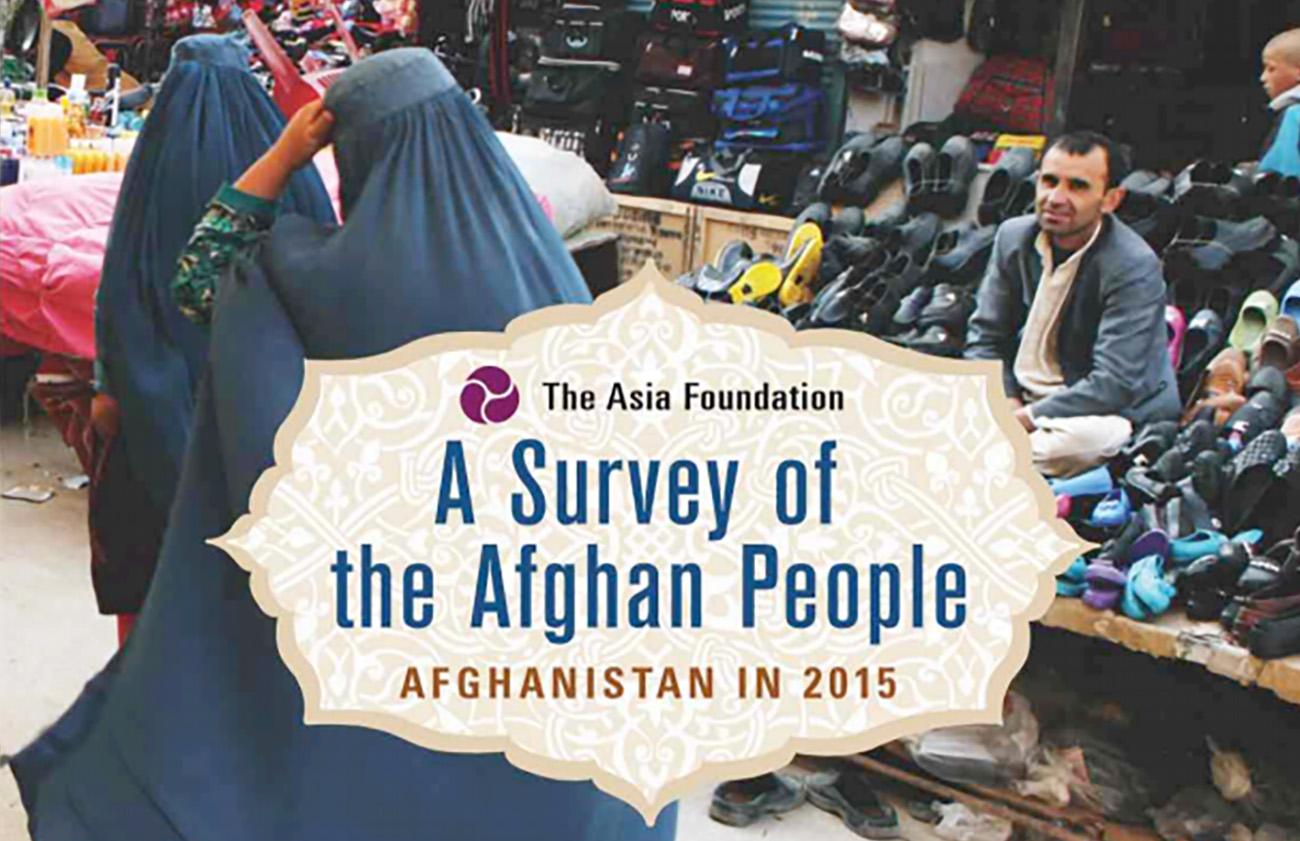The Asia Foundation Releases 2015 Survey of the Afghan People

KABUL, Afghanistan, November 19, 2015 – The Asia Foundation has released the results of the eleventh annual Survey of the Afghan People, conducted by ACSOR-Surveys, Afghanistan’s largest survey research company founded with the assistance of D3 Systems, Inc. The Asia Foundation released the survey in Kabul on November 17th, and presented the findings at the United States Institute of Peace in Washington, D.C. on November 19th. The results of the survey have been the subject of news articles and editorials in The Washington Post, The Guardian, The Los Angeles Times, and many other news outlets. Full results and data are free and publicly available on The Asia Foundation’s website. In addition, a conversation about the survey’s findings has been occurring on Twitter, marked with #AfghanSurvey.
The past year has been a challenging one for Afghanistan, and this is reflected in this year’s findings. 2015 has seen economic decline, heightened Taliban activity, and the emergence of Da’esh (ISIS) following the withdrawal of most U.S. and NATO forces at the end of 2014. The survey was conducted in the midst of the country’s deadliest fighting season since the Intervention in 2001, which saw heavy loss of life for both the Afghan National Defense and Security Forces (ANDSF) and civilians. It is therefore unfortunate but not surprising that optimism about the country’s overall direction has dropped: 57.5% of Afghans now say that things are moving in the wrong direction, up from 40.5% in last year’s survey, and the highest percentage to say so since the study began.
Consistent with previous studies, Afghans name the security situation (42.7%), unemployment and the poor economy (35.5% together), and corruption (24.2%) as the country’s main problems.[1] For the first time, the survey asked about the biggest problems facing youth, an important question in a country where over half the population is under the age of 18.[2] Respondents named unemployment as the leading problem for Afghan youth (71%), followed by illiteracy (26%), and the poor economy (16%).[3]
Fieldwork for the nationally representative survey, consisting of 9,586 face-to-face interviews conducted by 909 interviewers in all 34 provinces of Afghanistan, took place from June 11 – 28, 2015. Respondents were male and female Afghan nationals (82% rural, 18% urban – unweighted) aged 18 and over.
[1] Total of two mentions.
[2] “Statistics: Afghanistan,” UNICEF, December 18, 2013, http://www.unicef.org/infobycountry/afghanistan_statistics.html.
[3] Total of two mentions.
This entry was posted on November 19, 2015
Topics: Difficult Research Environments | Press, Politics & Foreign Policy | Survey Results
